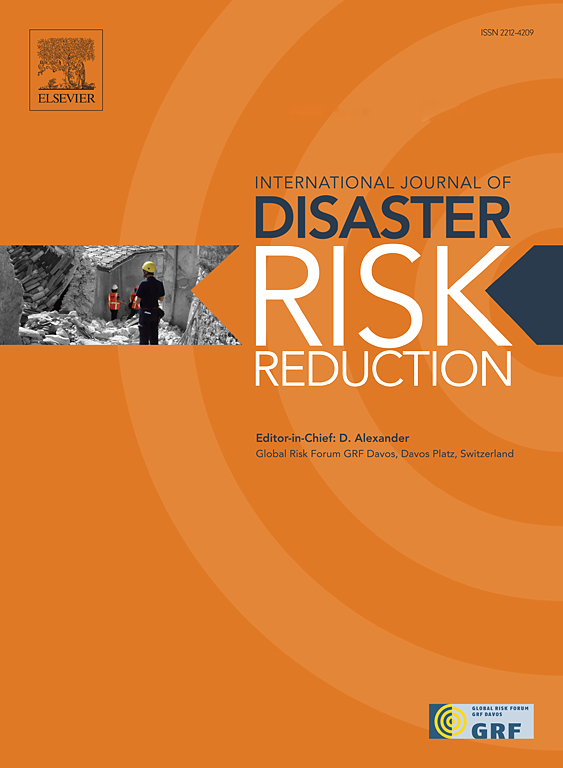An AI-driven approach to extract interrelationships between disasters
IF 4.2
1区 地球科学
Q1 GEOSCIENCES, MULTIDISCIPLINARY
International journal of disaster risk reduction
Pub Date : 2025-03-19
DOI:10.1016/j.ijdrr.2025.105417
引用次数: 0
Abstract
Accurately identifying interrelationships between disasters is essential for comprehensive multi-disaster risk assessment. Traditional manual methods rely heavily on expert judgment, which may lead to overlooked or inconsistently documented disaster interrelationships. To address this challenge, this study develops an AI-driven approach to automatically extract disaster interrelationships from large-scale textual data using a fine-tuned Universal Information Extraction model. First, disaster interrelationships are systematically categorized into six distinct types, considering both disaster causation and impact perspectives. Secondly, a large-scale dataset is constructed by collecting 5212 Chinese-language disaster-related paper abstracts from the China National Knowledge Infrastructure (CNKI). Among them, 267 abstracts were manually annotated to train and evaluate the model. Thirdly, the fine-tuned model is applied to the remaining 4945 abstracts to extract large-scale disaster relationship triplets, with manual validation conducted for less common triplets to ensure result reliability. Finally, disaster interrelationships are visualized using complex network graphs and matrices, providing an intuitive representation of multi-disaster interrelationships. The key contribution of this research is the development of an AI-driven approach to systematically extract disaster interrelationships from large-scale datasets, improving the accuracy and scalability of identifying disaster interrelationships. Furthermore, this study establishes a comprehensive and updatable database of disaster interrelationships, addressing limitations in previous research, such as incomplete data coverage and limited exploration of relationship types, and helps scholars to identify disaster interrelationships that may have been previously overlooked.
求助全文
约1分钟内获得全文
求助全文
来源期刊

International journal of disaster risk reduction
GEOSCIENCES, MULTIDISCIPLINARYMETEOROLOGY-METEOROLOGY & ATMOSPHERIC SCIENCES
CiteScore
8.70
自引率
18.00%
发文量
688
审稿时长
79 days
期刊介绍:
The International Journal of Disaster Risk Reduction (IJDRR) is the journal for researchers, policymakers and practitioners across diverse disciplines: earth sciences and their implications; environmental sciences; engineering; urban studies; geography; and the social sciences. IJDRR publishes fundamental and applied research, critical reviews, policy papers and case studies with a particular focus on multi-disciplinary research that aims to reduce the impact of natural, technological, social and intentional disasters. IJDRR stimulates exchange of ideas and knowledge transfer on disaster research, mitigation, adaptation, prevention and risk reduction at all geographical scales: local, national and international.
Key topics:-
-multifaceted disaster and cascading disasters
-the development of disaster risk reduction strategies and techniques
-discussion and development of effective warning and educational systems for risk management at all levels
-disasters associated with climate change
-vulnerability analysis and vulnerability trends
-emerging risks
-resilience against disasters.
The journal particularly encourages papers that approach risk from a multi-disciplinary perspective.
 求助内容:
求助内容: 应助结果提醒方式:
应助结果提醒方式:


